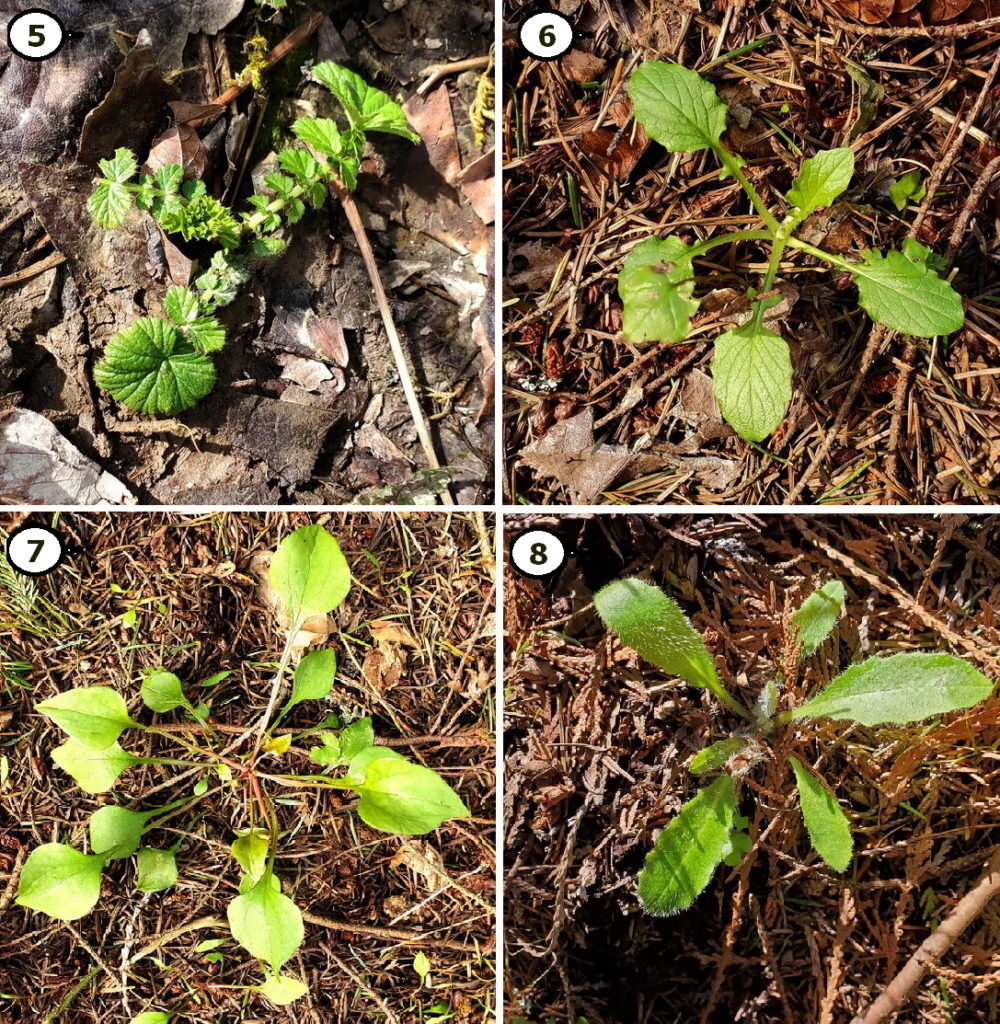One of the joys of backyard forest restoration is watching the native flowers come up in the Spring. It’s especially gratifying when they emerge in patches of “bare ground” that were previously covered in Ivy. Last week I took photos of some of my favorite natives, along with some not-so-favorite invasives. They may be hard to recognize from these photos since the plants are still small (though my Plant ID App correctly identified each of them.) They’ll be easier to identify in another month or two when they start to bloom, though it’s good to pull the invasive plants before then.

Two perennial natives, Pacific Bleeding Heart (#1) and Sweet Cicely (#4) have been coming up for a couple weeks. Both plants have amazed me by appearing within a year or two in spots where dense blankets of Ivy had been cleared away. In some cases, they may have been hiding beneath the Ivy, but more often I think they simply spread by seed from other spots nearby once the ground was cleared.
Before it blooms, the Class B noxious weed Herb Robert (#3) can easily be mistaken for Bleeding Heart or Sweet Cicely because of its fern-like leaves. Like the first-year plant in this photo, Herb Robert can germinate very early in the spring, getting a head start on natives.
The invasive perennial Creeping Buttercup (#2) can prevent native wildflowers from getting established. It usually stays green all winter and spreads by runners. It’s so hard to get rid of that often the most realistic strategy is simply to try to keep it from spreading with weed breaks.

The native Candyflower (#7) spreads rapidly by seed into cleared ground and dies back entirely in the winter. Two more natives, Large-leaved Avens (#5) and White-Flowered Hawkweed (#8) , also spread by seed but their basal leaves often persist all winter. I consider this species of Hawkweed to be a desirable native plant, despite its somewhat “weedy” appearance – which is very similar to the non-native Nipplewort (#6).
Nipplewort and another non-native, Wall Lettuce, spread by seed and are fairly invasive in sunny edges. In a couple months, I’ll be patrolling the forest edges to remove those two when they start sending up their flower stalks.